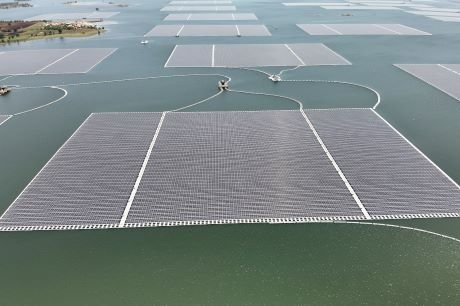Punjab’s ambitious journey towards renewable energy self-sufficiency is facing significant headwinds, with the state’s generous free electricity policy inadvertently impeding the growth of in-state solar power generation, thereby increasing its reliance on imported clean energy. Official data as of Saturday, July 12, 2025, reveals that while Punjab’s overall renewable energy capacity has expanded from 1,739 MW in 2021–22 to 2,426 MW by 2023–24, a substantial portion of this growth has been driven by solar power projects located outside the state’s geographical boundaries. This imbalance raises critical questions about Punjab’s long-term energy security and its commitment to fostering indigenous green energy production.
As of mid-2025, Punjab’s total solar capacity stands at 1,407 MW. However, only 940 MW of this capacity is generated within the state, while a significant 1,280 MW is sourced from external projects. This disparity is particularly stark when considering the marginal increase in in-state solar capacity, which rose only from 884 MW in 2021–22, remained flat through 2023–24, and inched up to just 940 MW by 2025. While Punjab’s non-solar renewables, such as biomass, experienced a slight dip from 1,242 MW in 2022–23 to 1,209 MW in 2023–24, external solar installations surged dramatically. Additions from outside the state jumped from 148 MW in 2021–22 to 767 MW in 2022–23 and 2023–24, eventually reaching 1,280 MW by 2025. Wind and other non-solar sources contributed an additional 450 MW to the state’s renewable energy mix.
A critical area of concern is the sluggish growth in rooftop solar installations within Punjab. While capacity increased from 263 MW in 2022–23 to 357 MW in 2023–24, it reached only 500 MW by 2025. Experts attribute this slow uptake primarily to the state’s politically popular yet economically challenging subsidy regime. Punjab provides 300 units of free electricity per month to over 80% of domestic users, coupled with free power for agricultural pump sets. A retired PSPCL (Punjab State Power Corporation Limited) official noted, “These politically popular subsidies offer little incentive for households and farmers to invest in rooftop installations, as they already receive heavily subsidized or free electricity.” This policy, while beneficial for consumers in the short term, inadvertently removes the financial incentive for individuals and businesses to invest in their own solar infrastructure, thereby slowing the decentralized growth of renewable energy within the state.
Despite these challenges, there are ongoing efforts to bolster in-state generation. In May 2025, PSPCL signed a 25-year power purchase agreement with a private firm for 400 MW of in-state solar power at a competitive rate of Rs 2.97/kWh. The plant, slated for construction within Punjab, is expected to be operational by May 2027. However, experts caution that such large-scale projects will take time to significantly impact the state’s overall energy profile. Meanwhile, plans for a 250 MW solar plant at the decommissioned GNDTP (Guru Nanak Dev Thermal Plant) site in Bathinda remain largely on paper, despite widespread support from engineers and climate advocates. Punjab currently ranks 11th among Indian states in total solar capacity, significantly lagging behind leaders such as Rajasthan (27.3 GW), Gujarat (17.6 GW), and Maharashtra. Its 500 MW rooftop base also falls far behind the frontrunners like Gujarat (3.45 GW), Maharashtra (1.7 GW), and Karnataka (1.2 GW). A senior power engineer underscored the urgency of the situation, stating, “The state’s overdependence on external solar power and its delay in fast-tracking local projects is unsustainable. Unless Punjab rethinks its policy framework — especially subsidies and bureaucratic delays — it risks falling behind in India’s green energy race.” This analysis highlights the critical need for Punjab to reassess its energy policies to promote greater in-state renewable energy development, ensuring a sustainable and secure energy future. This is web generated news web report.




